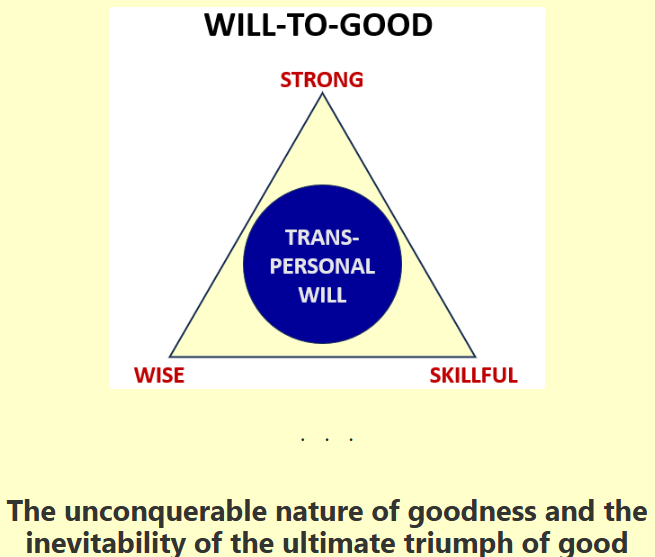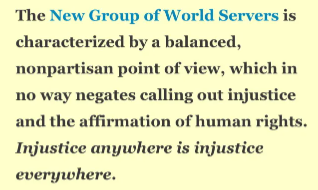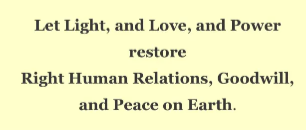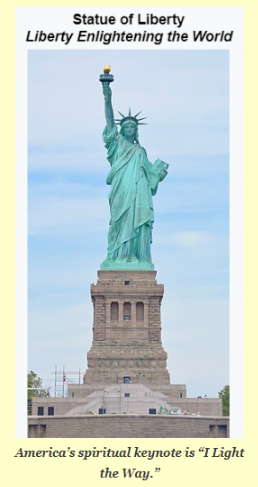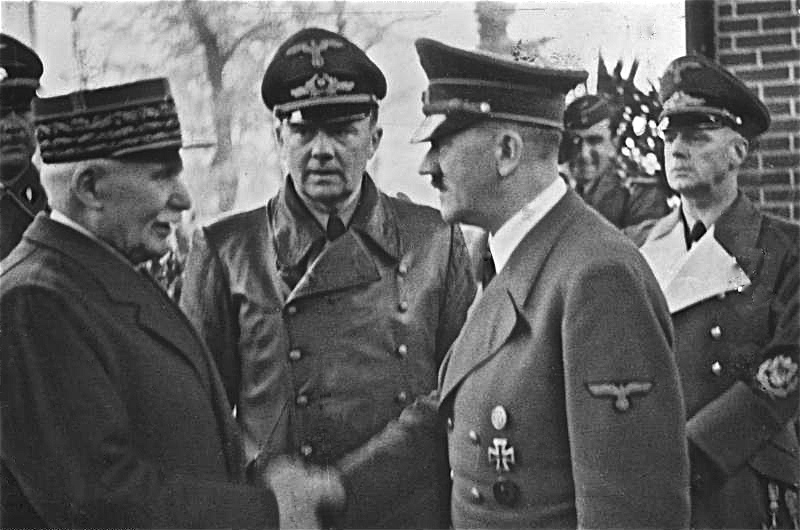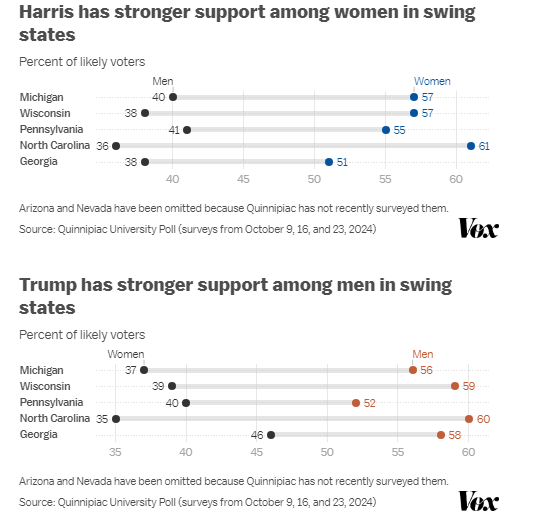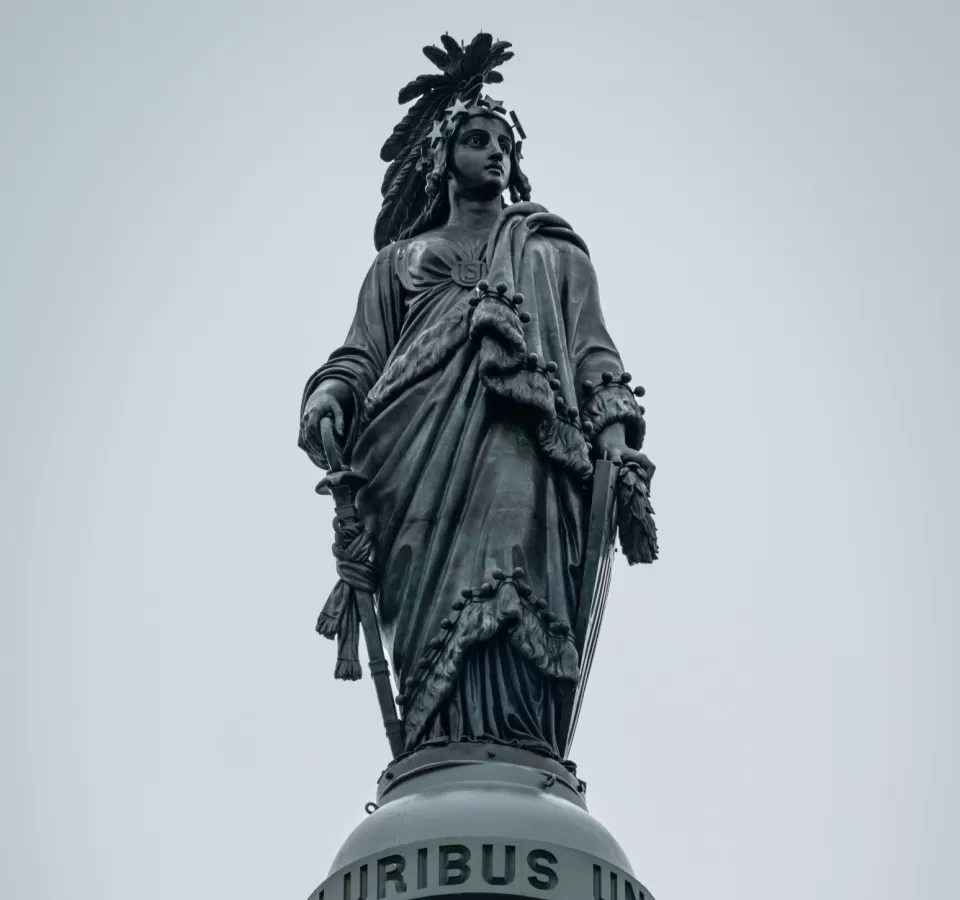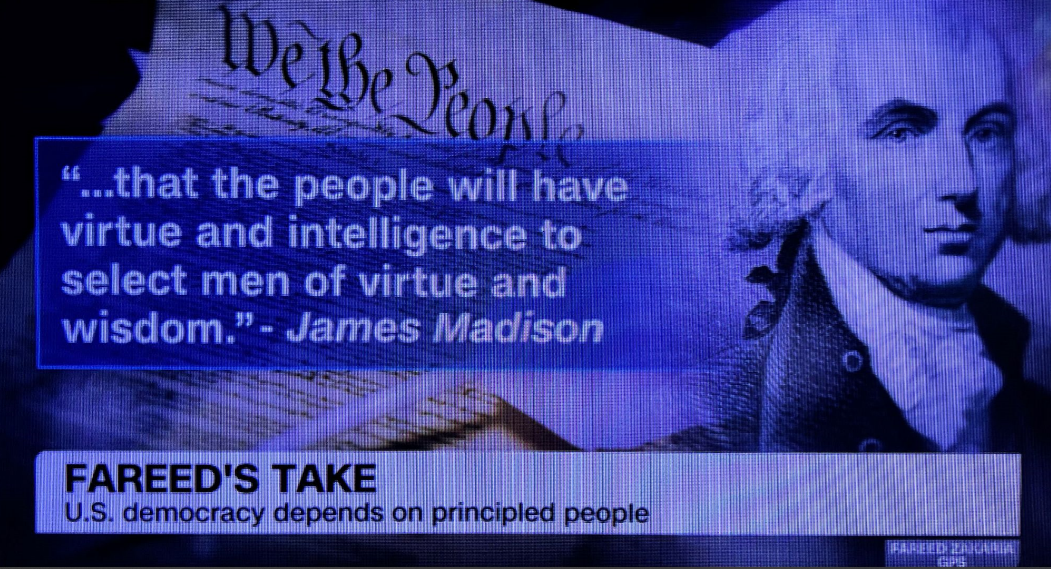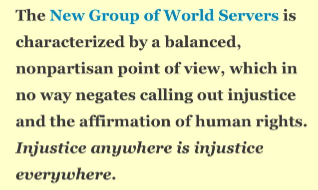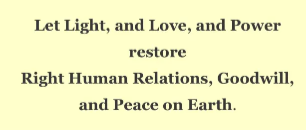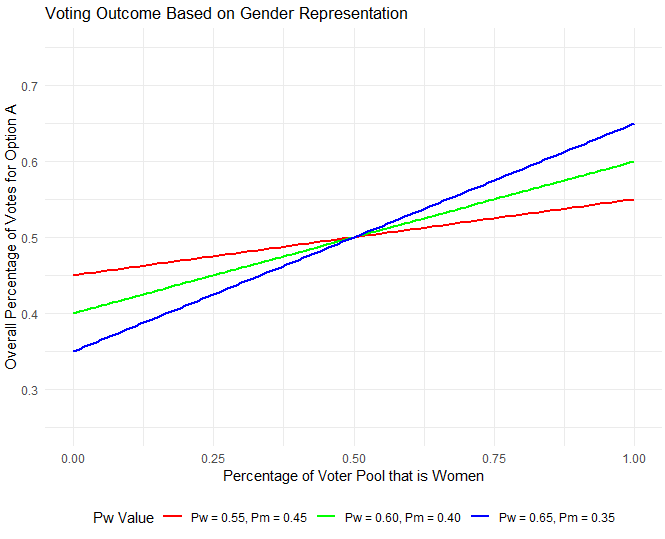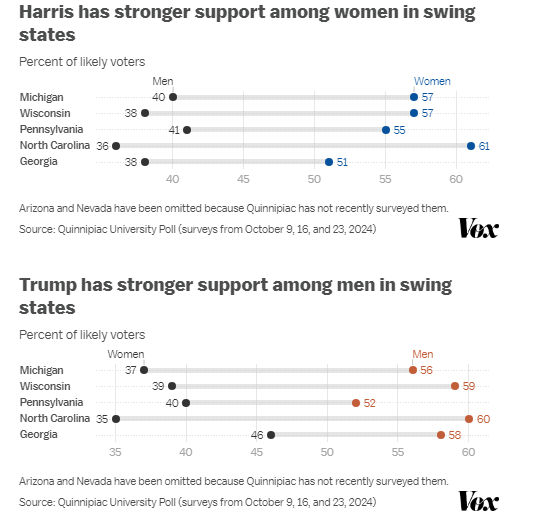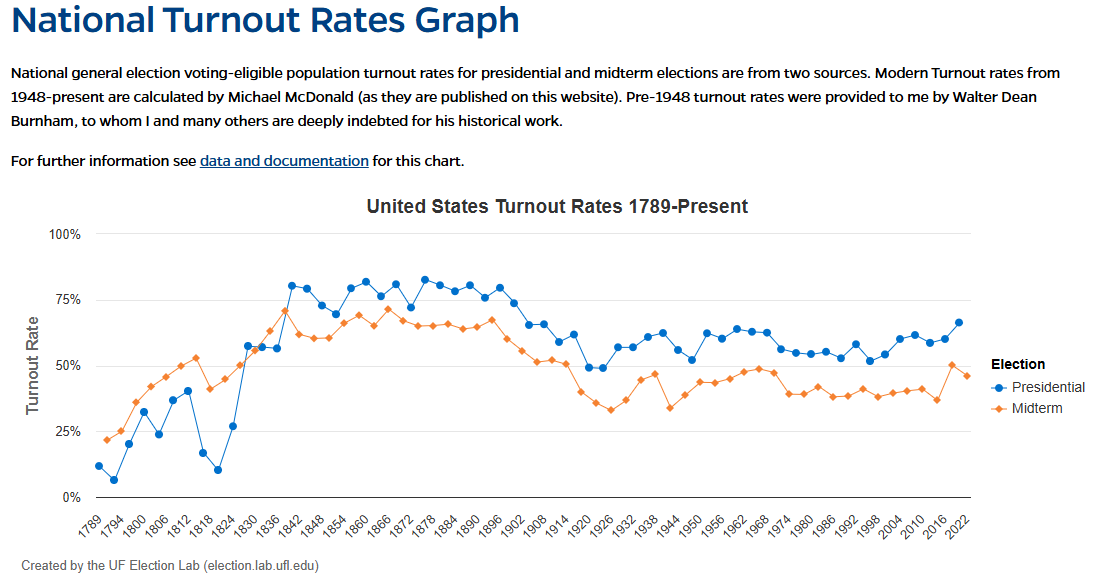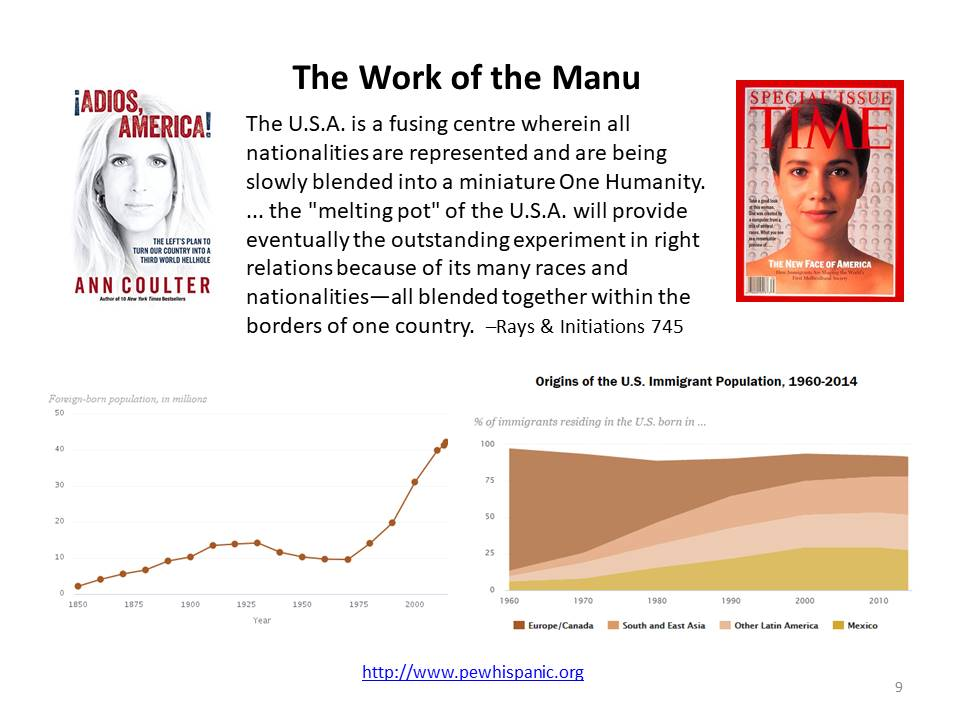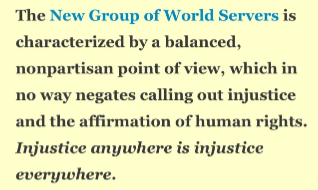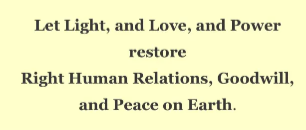SUMMARY
We stand on the cusp of significant societal change, positioning humanity at a crossroads of intellectual and cultural transformation. This moment echoes the pivotal shifts that occurred from classical antiquity to the modern era.
Since the dawn of this new millennium, numerous societal and political forces have influenced US presidential elections. The progressive forces are poised to triumph over the autocratic and regressive forces in this critical election. Given that women make up the majority of likely voters, the gender gap should provide a crucial—albeit narrow—electoral advantage for the progressive movement. The righteous indignation of women would thus put an end to outdated habits and practices.
A narrow victory for the progressive forces presents a crucial opportunity—perhaps the final one—to unify rural and urban America, as our nation evolves into a more racially integrated society: E pluribus unum. A new center must arise from the 2024 presidential election, bringing light, love, and strength to restore the Plan on Earth.
Archetypal Cosmology and Modern History
Introduction
The dawn of the new millennium placed humanity at a crossroads of intellectual and cultural transformation, reminiscent of pivotal shifts from classical antiquity to the modern era. This transformation stirs a profound tension between the necessity for critical rigor and the pursuit of larger truths. As societies grapple with existential questions about humanity’s role in nature, the foundation of moral values, and the complexities of governance, the stakes have never been higher. The challenges—social, political, economic, and ecological—are exacerbated by a metaphysical disorientation that demands deeper insights into the unconscious forces guiding human existence.
Despite unprecedented resources to address these looming issues, a missing element seems to hinder effective action. Particularly in the Western world, a pervasive sense of alienation underscores the urgency for an evolved understanding of reality. The intricate drama of these developments is captured in the works of Richard Tarnas, who has explored the evolution of Western thought and the current crisis of the modern self. His insights propose a path to engage creatively with today’s challenges, suggesting a new cosmological perspective to comprehend our universe and our role within it.
Archetypal Cosmology Framework
Richard Tarnas’s archetypal cosmology offers a lens to understand the cyclical nature of history through the influences of five outer planets: Jupiter, Saturn, Uranus, Neptune, and Pluto. Each planet embodies archetypal forces that shape human consciousness and societal evolution.
- Jupiter symbolizes progressive expansion and growth, encouraging exploration and integration of new ideas. It embodies the expansive possibilities that propel societal development.
- Saturn represents conservative structure and discipline, providing the critical rigor necessary to ground expansive growth in reality. It balances the visionary potential offered by other planets, ensuring stability and order.
- Uranus is the harbinger of revolution, sparking sudden changes and breakthroughs. It challenges established norms, driving innovation and unexpected societal shifts.
- Neptune offers visionary insights, inspiring dreams and ideals that transcend ordinary boundaries. It dissolves illusions to reveal interconnected truths.
- Pluto signifies deep transformation and regeneration, often through crisis or upheaval, leading to profound societal renewal.
The interplay between these archetypes reflects the dynamic balance between maintaining rigorous standards and embracing expansive possibilities, driving cultural and intellectual advancement.
Synodic Planetary Cycles
The synodic cycles between pairs of the five outer planets—Jupiter, Saturn, Uranus, Neptune, and Pluto—are crucial in understanding historical and cultural shifts. These cycles represent the time it takes for one planet to catch up to and pass another, creating significant astrological and symbolic events.
- Jupiter-Saturn: Occurring approximately every 20 years, this cycle is associated with socio-economic structures and shifts in political power. It is often linked to periods of reform and restructuring.
- Uranus-Pluto Spanning about 127 years, this cycle is associated with radical change and intense societal transformation, often seen during periods of significant upheaval and renewal.
- Uranus-Neptune: With a cycle of around 171 years, this aspect is linked to collective spiritual and ideological shifts, influencing cultural movements and ideals.
- Neptune-Pluto: Approximately every 492 years, this cycle involves profound transformations in global consciousness and long-term ideological developments.
- Other smaller cycles: These shorter cycles involving Jupiter and Saturn with the Uranus, Neptune and Pluto also play roles in influencing specific historical events and societal changes, highlighting the complex interplay of energies that drive human evolution. For instance, the Saturn-Uranus cycle every 45 years. This cycle brings tension between stability and change, often prompting societal breakthroughs and revolutions.
These pair-wise cycles serve as a backdrop for understanding the broader rhythmic patterns of history, offering insights into the potential for change and the emergence of new ideas.
Neptune-Pluto synods
- 1398-99: This earlier synod occurred during the late Middle Ages, a time characterized by profound changes in European society, including the early Renaissance’s cultural and intellectual awakening.
- 1891-92 (current): This synod is marking a period of significant cultural and ideological shifts, coinciding with the late 19th century’s transformative developments in science, philosophy, and the arts.
These synods are part of a long cycle that spans approximately 492 years, influencing deep, long-term transformations in global consciousness and societal structures.
Uranus-Neptune synods
Historical events coinciding with the Uranus-Neptune synods since the 1398-99 Neptune-Pluto synod are:
- 1478-79
- Renaissance Flourishing: This period was marked by the height of the Renaissance, a time of significant cultural, artistic, and intellectual revival in Europe. It saw the rise of humanism and advancements in art, science, and literature.
- Age of Exploration: The late 15th century also marked the beginning of the Age of Exploration, with explorers like Christopher Columbus preparing for voyages that would expand the known world.
- 1650-51
- Scientific Revolution: This era was pivotal for the Scientific Revolution, with figures like Galileo and Newton laying the groundwork for modern science. It was a time of questioning traditional beliefs and embracing empirical evidence.
- English Civil War: The mid-17th century was also marked by political upheaval, such as the English Civil War, which led to significant changes in governance and the eventual establishment of a constitutional monarchy.
- 1821-22
- Romantic Movement: The early 19th century saw the rise of the Romantic movement, emphasizing emotion, nature, and individualism in reaction to the Industrial Revolution and Enlightenment rationalism.
- Political Revolutions: This period was also characterized by political upheaval, including the Greek War of Independence and movements across Europe advocating for national sovereignty and democratic reforms.
- 1992-93 (current)
- Cultural and Ideological Shifts: significant changes in cultural and ideological landscapes, potentially driven by new philosophical or spiritual movements.
- Technological and Scientific Advancements: breakthroughs in technology and science that reshape societal norms and understanding.
- Political and Social Transformations: significant political and social changes, possibly involving movements for greater freedom, equality, and reform.
Uranus-Pluto synods
Based on historical patterns, this synod brings:
- Political Upheaval and Reform: significant political changes, possibly involving movements for greater democracy, equality, and justice.
- Technological and Scientific Breakthroughs: significant advancements in technology and science, potentially reshaping industries and daily life.
- Social and Cultural Transformations: major shifts in cultural norms and social structures, driven by new ideologies or movements advocating for change.
- 1455-56
- Printing Revolution: This period saw the advent of the printing press by Johannes Gutenberg, revolutionizing the spread of information and ideas, and laying the groundwork for the Reformation and the Renaissance.
- End of the Hundred Years’ War: The conclusion of this prolonged conflict between England and France marked significant political and territorial changes in Europe.
- 1597-98
- Scientific Advancements: This era was marked by the works of figures like Galileo, who began challenging traditional views of the cosmos, setting the stage for the Scientific Revolution.
- Cultural Renaissance: The late 16th century was a time of flourishing arts and literature, with the works of Shakespeare and other Renaissance artists reaching new heights.
- 1710-11
- Enlightenment Ideas: The early 18th century was characterized by the spread of Enlightenment ideas, emphasizing reason, science, and individual rights, which influenced political and social reforms.
- Colonial Expansion: This period also saw significant colonial expansion, particularly by European powers, impacting global trade and cultural exchanges.
- 1850-51
- Industrial Revolution: The mid-19th century was a time of rapid industrialization, transforming economies and societies with new technologies and urbanization.
- Revolutions of 1848: This wave of political upheavals across Europe sought to establish more democratic governments and address social inequalities.
- 1965-66 (current)
- Cultural Revolution: The 1960s were marked by significant cultural and social changes, including the civil rights movement, counterculture, and shifts in societal norms.
- Space Exploration: This period also saw major advancements in space exploration, culminating in the Apollo moon landings.
The Fourth Turning Theory
Neil Howe and William Strauss’s Fourth Turning theory posits that history follows a cyclical pattern of generational cycles, each lasting approximately 20-22 years. Collectively, these cycles form a saeculum, a larger cycle of 80-90 years, consisting of four “turnings”:
- The High: A post-crisis era characterized by strong institutions and collective optimism, where society is unified and focused on rebuilding.
- The Awakening: A period of spiritual and cultural renewal, challenging established norms and leading to significant social shifts.
- The Unraveling: Institutions weaken, individualism rises, and society becomes more fragmented as the collective confidence of the High dissipates.
- The Crisis: A time of profound transformation and upheaval, leading to a decisive resolution and the emergence of a new societal framework.
Historically, these phases have aligned with significant events, like the post-Civil War Reconstruction, the Progressive Era, the Great Depression, and World War II, illustrating the powerful influence of generational dynamics on societal evolution.
Steve Bannon has been influenced by this framework, using it to predict that the United States is currently in a “Fourth Turning,” a time of crisis that could lead to significant transformation, similar to past periods like the Civil War or World War II. This theory aligns with the idea of cyclical change and transformation, resonating with the broader concept of historical cycles.
The Four Turning Cycles and the 20-Year Jupiter-Saturn Synodic Cycles
The overlap between the Fourth Turning cycles and the 20-year Jupiter-Saturn synodic cycles suggests a correlation worth exploring, despite a temporal lag. In time series analysis, lags are crucial for understanding relationships over time, as seen in Richard Tarnas’s work. He proposes that cosmic archetypal patterns correlate with cultural shifts, though these influences may not manifest immediately. The lag allows themes to gradually integrate into cultural contexts, reflecting the nuanced interplay between cosmic cycles and human experience.
Generational Planets
Uranus, Neptune, and Pluto, known as generational planets due to their lengthy orbits, mark broader societal trends. Each is transitioning into new signs, signaling significant shifts:
- Uranus in Taurus (2018-2025) echoes previous economic upheavals, like those during the Great Depression, reflecting changes in values and material resources. Forthcoming Uranus in Gemini is known for bringing about significant changes in communication, technology, and social structures.
- 1858-1865
- American Civil War: This period was marked by the American Civil War (1861-1865), a pivotal conflict that led to the abolition of slavery and significant changes in the United States’ social and political landscape.
- Advancements in Communication: The completion of the first transatlantic telegraph cable in 1858 revolutionized long-distance communication, connecting Europe and North America.
- 1941-1949
- World War II: Uranus was in Gemini during much of World War II, a time of global conflict that led to significant geopolitical changes and the emergence of the United States and the Soviet Union as superpowers.
- Post-War Innovations: The post-war period saw rapid technological advancements, including the development of computers and the beginning of the space race.
- 2025-2033
- This upcoming transit could reflect significant changes in digital communication, artificial intelligence, and global connectivity, potentially reshaping how societies interact and function.
- Neptune in Pisces (2011-2026) aligns with past spiritual and cultural movements, influencing creativity and societal ideals. Historically, Neptune in Aries has been associated with periods of pioneering spirit, innovation, and dynamic change.
- Previous Transit (1861-1875): This period included the American Civil War and the subsequent Reconstruction era. It was a time of significant conflict and transformation, aligning with Aries’s themes of action, courage, and new beginnings.
- Earlier Transit (1697-1711): This era saw the War of Spanish Succession and the early stages of the Enlightenment, reflecting Aries’s influence on initiating new ideas and challenging existing structures.
- Pluto in Capricorn (2008-2023), is associated with transformative changes in structures of power, governance, and societal institutions. It begun its move into Aquarius in 2023. Pluto’s transition from Capricorn to Aquarius symbolizes shifts in authority and social structures, paralleling historical transformations (brotherhood, universality and synthesis) during the American and French Revolutions.
- Previous Transit of Pluto in Aquarius (1762-1778)
- American Revolution: This period saw the American colonies’ struggle for independence from British rule, leading to the American Revolution (1775-1783) and the eventual establishment of the United States.
- Industrial Revolution: The late 18th century marked the beginning of the Industrial Revolution, which transformed economies from agrarian to industrial, leading to significant social and economic changes.
- Earlier Transit of Pluto in Aquarius (1516-1532)
- Protestant Reformation: This era was pivotal for the Protestant Reformation, initiated by Martin Luther’s 95 Theses in 1517. It led to significant religious, political, and cultural upheaval across Europe, challenging the Catholic Church’s authority.
- Age of Exploration: During this time, European exploration expanded significantly, with explorers like Ferdinand Magellan embarking on voyages that would reshape global trade and cultural exchanges.
The current reconfiguration of a sextile aspect between these planets, as seen around 1945, suggests transformative opportunities. This harmonious alignment could be associated with breakthroughs in technology, shifts in political and social systems, and a reimagining of global ideals.
Summary
The major synodic cycles of the Uranus, Neptune, and Pluto, alongside the minor 20-year Jupiter -Saturn cycles (corresponding to the Fourth Turning theory), offer a insightful framework for understanding modern history. These cycles suggest that we are on the brink of significant societal change, echoing transformative energies of the past. By recognizing and engaging with these patterns, humanity can navigate current challenges with greater insight, fostering a future shaped by innovative and visionary ideals.
The 2024 US Presidential Election
In a recent post, Nate Cohn provides a comprehensive analysis of the main vectors of forces interacting in this presidential election.
Cohn states that the campaign has not progressed as smoothly for Democrats as they had anticipated. Despite setbacks like the January 6th events and multiple indictments, Donald Trump remains competitive. The political environment isn’t as favorable for Democrats, with low approval ratings for President Biden and a general dissatisfaction among voters. Republicans have gained ground in party identification and key issues, except for democracy and abortion. This trend mirrors global political shifts where ruling parties face challenges post-pandemic, with high prices and disillusionment eroding trust in governments. Democrats face difficulties but have potential advantages with issues like abortion and Trump’s controversies. However, they are on the defensive, shifting right on issues like immigration and crime, and focusing on reducing prices over expanding the social safety net. This could signal a decline in liberal dominance in U.S. politics.
Since 2008, Democrats and liberalism have dominated American politics, winning the popular vote in four consecutive presidential elections and enacting significant legislation like the Affordable Care Act. Culturally, liberal movements such as Black Lives Matter and #MeToo gained momentum. However, according to Cohn, recent years have seen a decline in liberal energy, with backlash against pandemic restrictions and “woke” activism becoming mainstream. Economic issues like inflation and high gas prices have been attributed to liberal policies, prompting Democrats to shift right on issues like immigration, energy, and crime. This shift is reflected in party identification, with Republicans gaining ground and leading in key battleground states. Despite enacting much of their agenda, many voters remain dissatisfied, signaling a potential end to the era of liberal dominance.
In summary:
- Republican Opportunity:
- Loss of Democratic advantage in party identification and Republican gains on issues suggest a strong opportunity for Republicans to win the election.
- Impact of Trump’s Liabilities:
- Trump’s personal challenges, such as his conduct on January 6 and other controversies, complicate a decisive Republican victory.
- Without these liabilities, Republicans might have achieved a significant “change” election, similar to past shifts in 1980 (Reagan) or 2008 (Obama).
- Potential Outcomes:
- If Trump wins, it may be due to voter disillusionment with Democrats post-pandemic, rather than his popularity.
- If Trump loses, it could be attributed to his own actions and the Supreme Court’s decision on Roe v. Wade.
- Implications for Democrats:
- A Harris victory might not signal a strong future for progressives.
- Even with a win, the era of liberal dominance might be seen as ending, despite maintaining a winning streak.
CONCLUSION
Since the dawn of this new millennium, numerous societal and political forces may have influenced US presidential elections beyond those identified by Cohn, as indicated by the earlier discussed cosmological archetypes framework.
While the future is inherently uncertain, historical performance often serves as the best indicator of what lies ahead. The past expressions of cosmic archetypal forces suggests that we stand on the cusp of significant societal change, positioning humanity at a crossroads of intellectual and cultural transformation. This moment echoes the pivotal shifts that occurred from classical antiquity to the modern era.
In the short term, the progressive forces symbolized by Jupiter, the planet of joy, are poised to triumph over the autocratic and regressive elements represented by a lower manifestation of Saturn in this critical election. This pivotal moment is reflected by the cosmic alignments of Uranus, Neptune, and Pluto. Given that women make up the majority of likely voters, the gender gap may provide a crucial—albeit narrow—electoral advantage for the progressive movement. The righteous indignation of women would thus put an end to outdated habits and practices.
In the long run, it would be prudent to heed Cohn’s analysis closely. A narrow victory for the progressive forces presents a crucial opportunity—perhaps the final one—to unify rural and urban America. To achieve this, the left must temper its “woke” culture war against the values and traditions of rural America and work to regain their trust as we collectively navigate an uncertain future.
The radical left’s intolerance of dissent, particularly in the ongoing debates surrounding gender dysphoria and gender theory, must come to an end. It is essential to foster an open-minded dialogue that also considers the conservative perspective, which also seeks to protect children and families. Similarly, the radical right should reconsider its self-righteous stance on Christian nationalism and American exceptionalism as our nation evolves into a more racially integrated society: E pluribus unum.
A new center must arise from the 2024 presidential election, bringing light, love, and strength to restore the Plan on Earth.
Post Script (3 Nov 2024):
If women represent a higher percentage of the voter pool than men, and there is a positive gender gap favoring women (meaning a higher percentage of women support a particular option compared to men), then this would result in that option achieving a majority. Here’s why:
- Higher Representation: Since women make up a larger portion of the voter pool, their voting preferences have a greater impact on the overall outcome.
- Positive Gender Gap: A positive gender gap means that a higher percentage of women support the option compared to men. This amplifies the influence of women’s preferences on the final result.
- Majority Outcome: With women both more numerous and more supportive of the option, their combined influence is likely to push the overall vote for that option above 50%, resulting in a majority.
In summary, when women are a larger part of the electorate and have a higher support rate for an option, their influence could be strong enough to secure a majority for that option. If this trend would prevail in each of the seven battleground states of the 2024 presidential election, a victory for Kamala Harris would be inevitable. However, the influence of the gender gap on the voting outcome depends on both the proportion of women in the voter pool and the relative support levels of men and women. [this last paragraph of the Post Script was edited on 4 Nov 2024 @ 7:00 am EST]
Technical note: To predict the voting outcome given a positive gender gap and a majority representation in the voting pool, you can use a simple weighted average equation.
Let:
W = percentage of the voter pool that is women
M = percentage of the voter pool that is men (M = 1 – W)
Pw = percentage of women voting for option A
Pm = percentage of men voting for option A
The equation to predict the overall percentage of votes for option A (P_total) is:
P_total = (W * Pw) + (M * Pm)
This equation calculates the weighted contribution of each group’s voting preference to the overall outcome, based on their representation in the voter pool.
W * Pw represents the contribution of women to the total vote for option A.
M * Pm represents the contribution of men to the total vote for option A.
By adjusting W, Pw, and Pm, you can assess how changes in representation and voting preferences impact the final voting outcome.
2024.11.04 @ 10:00 am:
If the gender gap is at least 20% and male support for Candidate A = 40% , then having more than 50% of the voters as women will ensure that Candidate A wins. This is because the higher support among women (at least 60% due to the gender gap) combined with their majority in the voter base will push the overall support for Candidate A above 50%.
If male support > 40% : the required proportion of women to ensure victory decreases.
If male support < 40%: the required proportion of women to ensure victory increases.
In both cases, the exact percent of women needed in the voter turnout depends on the male support for Candidate A.



